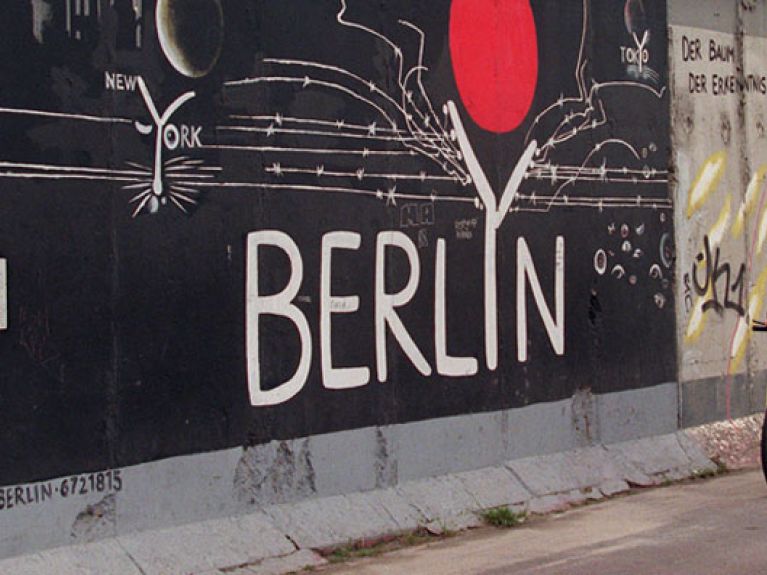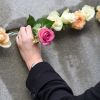A cycle tour along the former Wall
A dossier on the 25th anniversary of the fall of the Wall. In Part 10 we cycle the course of the former Wall and experience what is otherwise barely tangible today: Berlin as a divided city.

Before the tour begins, Knut pauses briefly and points to a small entrance. “Franz-Klub” is written on the sign. “That’s where I got to know punk rocker Nina Hagen in the 1970s.” The story of divided Berlin is also Knut’s story. The 60-year-old tour guide was born and still lives in the Prenzlauer Berg district in the eastern part of Berlin. Knut rides ahead on his bike, past all the modernised old apartment buildings towards the Jahn Stadium. The Wall used to run behind the sports park. On the forecourt, Knut draws a big circle in the gravel with his foot. In the middle there’s a line, and in the upper right another small circle. “This circle was West Berlin,” he says. It was completely enclosed.
After the stadium, we cross a park. The death strip used to run along here, where today couples lie on the grass, tourists drink beer and families enjoy a barbecue. A few hundred metres on, Oderberger Strasse crosses Bernauer Strasse. A small line of cobblestones on the ground here reminds us of the 167.8-kilometre structure that epitomised the division of Germany on 13 August 1961: the Berlin Wall. The DDR leaders gave the order to seal off the city in 1961 because the economic situation was rapidly deteriorating and the number of refugees was increasing day by day.
Roswitha Funck, 66, went to Berlin for the first time in 1961. The native of Hamburg had a pen friend in the western part of the city and can remember exactly how unreal it seemed to her then when she travelled to the city for the first time at the age of ten – to the city that was the symbol of the Cold War. Today she is reminded of this during the Berlin Wall bike tour. Her eyes rest for a while on the old steel girders of the Wall. Next to them Knut is pointing out plates on the ground that symbolise escape tunnels. The stories of the escapees still fascinate people even today. Knut’s favourite story is the one about the “duck man”. In order to cross the river Spree from East to West, he attached a duck to the top of his head. The border guards were uncertain, but the man even quacked – and actually made it to the other side.
Günter Litfin didn’t manage it. On 24 August 1961 he was shot trying to escape to West Berlin. He was the first fatality at the Berlin Wall. Knut is a personal friend of his brother Jürgen. He pauses briefly when he tells the story, looks at the picture of the dead man and shakes his head. One victim among many.
The East Side Gallery, an open-air gallery in the Berlin district of Friedrichshain, is just the right thing to focus your attention on something else. It is a one-kilometre stretch of the Wall that was painted by artists in 1990 shortly after reunification. It is a symbol of the peaceful triumph over the Iron Curtain. Tourists sit on the bank of the Spree behind the section of Wall. In front of it, people are taking photographs, a piece of history for their photo albums. Many of the visitors weren’t even born when the Wall fell. They are interested in the art, the graffiti. For Knut, however, the tour guide from East Berlin who was born before the Wall even existed, this place tells a different story.
© www.deutschland.de
